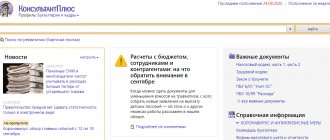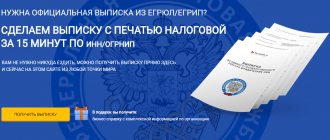In 2021, when individual entrepreneurs register, they choose the taxation system that is most suitable for them. Since modern Russian individual entrepreneurs mainly work under the simplified tax system or UTII, the question arises: what is more profitable - “imputed” or “simplified”? Our experts explain all the nuances in this article.
What is a “simplified tax system”?
The simplified tax system is initially aimed at individual entrepreneurs and small enterprises. If you do not produce excisable goods, do not extract minerals, during the year you had no more than 100 employees, and you do not pay a single agricultural tax, then you have the right to choose a simplified tax system. By complying with these requirements and receiving no more than 60 million rubles of income per year, taking into account the deflator coefficient (in 2021, the maximum amount of income to remain in the special regime is 79.74 million rubles), you will retain the right to apply the simplified tax system in the next reporting period. period. Otherwise, starting from the quarter in which the requirements were violated, the right to simplification is automatically lost and you will have to switch to the general system.
© photobank Lori
Individual entrepreneurs who are simplified are exempt from paying personal income tax at a rate of 13% regarding income received from business activities (employees, if any, must be paid in any case), and organizations are exempt from paying income tax and property tax in a number of cases ( if it is not calculated at the cadastral value and the property is not included in the corresponding list), and from paying VAT (except for the import of goods into the customs territory of the Russian Federation and when performing operations provided for in Article 174.1 of the Tax Code of the Russian Federation).
The tax rate for the simplified tax system “income” is 6%, for the simplified tax system “income minus expenses” - 15%, and in the regions their amount may be even lower. For participants in simple partnership and trust management agreements, only a 15% rate is possible.
Simplification takes into account the interests of both profitable types of business and those with a large share of costs. There is not one object of taxation here, but two to choose from: “income” or “income minus expenses.” The selected object can be changed annually by notifying the Federal Tax Service in advance. If your activity involves high profitability, then it is more profitable to simplify it with the “income” object. If the share of costs is high, it is better to choose income minus expenses. As a rule, choosing a simplified 15% rate makes sense if the share of expenses is more than 60% of income. With a smaller amount of costs, the tax amount will be even higher than with a six percent simplification. Example
An individual entrepreneur using the simplified tax system received an income of 1 million rubles in a year. Expenses amounted to 810 thousand rubles. Let's calculate the simplified tax at both rates.
- Under the simplified tax system, “income” tax will be: 1 million rubles * 6% = 60 thousand rubles.
- Under the simplified tax system “income minus expenses,” the tax will be: (1 million rubles - 810 thousand rubles) * 15% = 190 thousand rubles * 15% = 28.5 thousand rubles.
When determining the expenditure part with a simplified tax system of 15%, you need to remember that not all costs can be counted towards reducing the tax base. You need to focus on Article 346.16 of the Tax Code of the Russian Federation, which contains a list of all expenses accepted for deduction.
The tax can also be reduced by simplifying the “income” tax. Individual entrepreneurs without employees can fully deduct the amount of insurance contributions “for themselves” to the Pension Fund and Compulsory Medical Insurance Fund, and individual entrepreneurs with employees can deduct contributions to the Pension Fund, Social Insurance Fund and Compulsory Medical Insurance Fund from payments to employees in the amount of up to 50% of the single tax amount. Simplified tax payers have the right to offset it, but only in the part of the tax that is calculated from trading activities.
There is only one tax register for simplified people - a book of income and expenses. The tax period is a year, but advance payments must be calculated and paid quarterly. Tax is paid at the place of registration of the individual entrepreneur and organization. Organizations must also keep accounting records and submit financial statements - they acquired this obligation not so long ago - with the reporting for 2014.
If, with a simplified tax system of 15%, a loss is received at the end of the tax period and the simplified tax is zero, then you will have to pay a minimum tax equal to 1% of income for the reporting year. The minimum tax is also paid if, when calculating the tax, its amount is positive, but less than 1% of income. The difference between the calculated amount of simplified and minimum tax can be included in the expenses of the next tax period.
You must pay the tax at the end of the year and submit the individual entrepreneur’s declaration before April 30 of the year following the reporting year, and the organization reports until March 31.
Choosing the optimal tax regime
When a citizen registers as an individual entrepreneur, he must choose a tax regime. Each of them has its own pros and cons, as well as criteria for its application (especially in relation to special modes).
Starting from 2021, individual entrepreneurs can apply the following tax regimes:
- professional income tax;
- patent tax system;
- simplified taxation system;
- single agricultural tax;
- general taxation system.
In 2021, entrepreneurs could also apply the single tax on imputed income (UTI), but from 2021 this special regime is canceled, so in the article we will not talk about UTII for individual entrepreneurs. But I would like to draw attention to the fact that PSN is considered a regime designed to replace UTII.
Each special mode has its own limitations
by income level, possible types of activity, number of employees and cost of fixed assets. We will talk in more detail about each of the tax regimes below.
Some entrepreneurs, in addition to the main criteria, also pay attention to the obligation to submit reports and keep records. In general, on the basis of Federal Law No. 402-FZ dated December 6, 2011 “On Accounting,” individual entrepreneurs are not required to maintain financial statements. However, individual entrepreneurs must keep tax records and are also required to submit reports. Each tax regime has its own reporting, as well as its own reporting deadlines and frequency of submission (from once a month to once a year). Therefore, if an entrepreneur plans to run a small business, submitting reports every month will be problematic for him - especially if he does not have an accountant.
The Federal Tax Service has developed
a special calculator that online helps individual entrepreneurs decide on the optimal tax regime.
When working with the calculator, you should select:
- category “individual entrepreneur”;
- expected level of income for the year;
- number of employees.
Depending on the selected indicators , the online calculator suggests which taxation regime is best for individual entrepreneurs
.
For example, an entrepreneur plans to receive 1.5 million rubles in income in a year and employ up to 5 people. At the same time, he does not want to keep tax records and submit reports. We indicate the selected criteria in the calculator.
With such “wishes” there is no taxation regime for individual entrepreneurs. If we remove the absence of the obligation to keep tax records, then the entrepreneur is advised to consider the patent tax system.
However, please note that this calculator only selects tax regimes based on the basic criteria specified. But besides them, there are also additional parameters. For example, specific types of activities are established for the application of PSN. If an entrepreneur is engaged in a type of activity “prohibited” for a patent, for example, the production or sale of excisable goods, it is natural that he will not be able to apply such a special regime.
All these nuances are not available in the online calculator. Therefore, even when using a calculator, it is worth studying the tax regime in more detail
, which are planned to be selected.
In addition, on the Federal Tax Service website there is
a special comparative table indicating all tax regimes, tax rates, tax base, reporting period and reporting.
What is special about “imputation”?
What is the difference between imputation and simplification? UTII can only be applied by those whose type of activity is specified in Art. 346.26 Tax Code of the Russian Federation. It is not the actual income received that is taxed, but the expected – “imputed” one. You can switch to UTII or refuse it in any month by submitting a corresponding application to the Federal Tax Service.
An entrepreneur does not pay personal income tax of 13% for himself, property tax (except for the tax in relation to real estate objects that are included in the list determined in accordance with clause 7 of Article 378.2 of the Tax Code of the Russian Federation) and VAT (with the exception of the import of goods into the territory of the Russian Federation) . UTII payers have the right not to use cash registers, issuing strict reporting forms to customers. You can become a presumptive tax payer if the number of your employees for the year does not exceed 100 people, you do not pay the Unified Agricultural Tax, but at the same time you are not a party to simple partnership or trust management agreements, and the area of the sales floor (diner serving visitors in public catering) does not exceed 150 sq. m. You cannot switch to UTII if you rent out gas stations. The transition is also not possible for those types of activities for which a trade fee is paid. Unlike the simplified tax system, there are no restrictions on the amount of income with UTII.
The imputed tax rate is 15%, but at the municipal level it may be lower.
You need to pay tax and submit a declaration at the place of business activity, registering with the Federal Tax Service as a UTII payer. At the place of registration, the tax is paid if the individual entrepreneur provides services of cargo and passenger road transportation, advertising on transport, or is engaged in peddling and distribution trade. If the place of registration of an entrepreneur coincides with the place of his activity, the registration will be in one tax office.
The main feature of UTII lies in the determination of the tax base - imputed income. To calculate the imputed income of an entrepreneur, you need to multiply his basic profitability for the tax period by the amount of physical characteristics (number of employees, sales area, etc.) for a specific type of activity. These indicators are contained in paragraph 3 of Art. 346.29 Tax Code of the Russian Federation.
Then the obtained result is adjusted using special coefficients: K1 – deflator coefficient, which is established annually by the Ministry of Economic Development of the Russian Federation. In 2021, K1 is 1.798.
K2 is set by the authorities of the constituent entity of the Russian Federation and can range from 0.005 to 1.
Example
Individual entrepreneur at Vmenenka provides services for repair, maintenance and washing of vehicles. According to paragraph 3 of Art. 346.29 of the Tax Code of the Russian Federation, its basic profitability is 12,000 rubles. per month, the number of employees, including the individual entrepreneur himself, is 5 people. The number did not change during the quarter. The coefficient K1 is 1.798. The K2 coefficient is conditionally equal to 0.7. Let's calculate imputed income (IM) and tax (UTII).
- VP per month = 12,000 rub. * 5 = 60,000 rub.
- VC for the quarter = 12,000 rubles. * (5+5+5) = 180,000 rub.
We correct the result obtained for the quarter using the coefficients:
- VC for the quarter = 180,000 rubles. * 1.798 * 0.7 = 226,548 rub.
- UTII = 226,548 rubles. * 15% = 33,982 rub.
An individual entrepreneur can reduce the amount of tax by deducting all insurance contributions paid to funds “for himself”, and also by deducting contributions from payments to employees, but in an amount of no more than 50% of the calculated tax.
The tax period for UTII is a quarter, the tax must be paid before the 25th day, and the declaration must be submitted four times a year before the 20th day of the month following the reporting quarter. Although imputation is inferior to the simplified tax system in terms of the volume of reports submitted, it does not require maintaining tax registers, as with simplification.
UTII also has its significant disadvantages. Even if you had no income at all during the reporting period, you will not be able to submit a zero return - you will always have to pay imputed tax. That's why he's imputed.
For types of activities that are not subject to imputed tax, a general or simplified taxation system must be applied, and this requires maintaining separate records of property, liabilities and business transactions. Separate accounting is also required in the case when several types of activities subject to UTII are carried out simultaneously, and all this may entail unnecessary labor costs for the entrepreneur.
How to switch to UTII?
The transition to the chosen taxation system occurs in the same way as in the case of the simplified tax system. To switch to UTII, legal entities must meet several requirements:
- The enterprise does not belong to the category of the largest.
- The maximum share of participants of legal entities is no more than 25%.
- The number of employees does not exceed 100 people.
- The company does not lease gas stations.
- The UTII regime has been introduced on the territory of a constituent entity of the Russian Federation.
- The local official document specifies the required activity.
- The activity is not carried out on the basis of a trust agreement or a simple partnership.
In addition, the enterprise should not belong to the category of educational and social, health care institutions, and should not provide catering services.
As for individual entrepreneurs, the list of requirements for them is reduced; all points except the first two apply, which is quite obvious.
General in UTII and simplified tax system
Having considered both modes separately above – imputation and simplification, what is the difference between them, it became clear. What do they have in common? Each system has its own pros and cons, but there are also similarities:
- voluntary nature;
- it is possible to combine the simplified tax system and UTII, but separate accounting is necessary; exemption of entrepreneurs from paying a number of taxes (personal income tax, VAT, partially property tax), although they will have to pay other taxes and contributions; simple tax accounting;
- the conditions for application are similar based on the number of employees, the prohibition to combine with the Unified Agricultural Tax;
- if the established limits are exceeded, the right to the simplified tax system and UTII is lost from the beginning of the quarter in which the excess was allowed, and the activities of individual entrepreneurs are taxed according to the general system;
- the amount of tax can be reduced through contributions to funds both under UTII and under the simplified “income” scheme;
- Payment to the budget is made quarterly: tax under UTII, advance payments under the simplified tax system;
- it is necessary to pay tax even if there is no income under UTII and the simplified tax system “income minus expenses”.
PSN for individual entrepreneurs
The patent taxation system is designed specifically for individual entrepreneurs. Individual entrepreneurs can switch to this special regime only upon application. The patent term ranges from 1 month to 1 year
, after which the entrepreneur can file another application for the use of a patent for a period of up to 12 months.
A patent is issued for the use of one specific type of activity
from the list of those approved by paragraph 2 of Article 346.43 of the Tax Code of the Russian Federation, including:
- dry cleaning and hairdressing services;
- household services to the population;
- repair and tailoring;
- veterinary services;
- conducting excursions;
- road transport;
- catering services;
- other.
Individual entrepreneurs on PSN cannot sell excisable goods or goods subject to mandatory labeling
in accordance with subparagraph 1 of paragraph 3 of Article 346.43 of the Tax Code of the Russian Federation.
If an individual entrepreneur plans to engage in several types of activities that are suitable for the use of PSN, then he needs to obtain several patents and keep records of income and expenses for each type of activity separately.
Also, the main criterion for applying PSN is the number of employees. The number of employees should not exceed 15 people throughout the entire period of validity of the patent.
The tax amount does not depend on the actual income received and is calculated using the following formula:
Tax amount = Tax base / 365 (366) days × Patent term in days × 6%
The tax base is defined as the potential income from business activities. Its size is approved by regional authorities annually.
The tax amount must be paid in two installments. The first part of the tax must be transferred to the budget no later than 90 days from the date of application of the PSN in the amount of 1/3 of the total tax. The second part in the amount of 2/3 of the tax amount is subject to transfer to the budget before the expiration of the patent.
An individual entrepreneur on a patent is exempt from paying the following taxes:
- personal income tax;
- VAT;
- property tax.
An entrepreneur using a patent tax system does not have to submit any declarations to the tax office.
. However, it is necessary to keep tax records (a book of income and expenses).
You can read more about the PSN, the rules for its use and transition to it on the Federal Tax Service website at this link.
Example: An individual entrepreneur repairs computers and develops computers. He issued 2 types of patents, valid for six months and 1 year, respectively. The activities will be carried out in Moscow. To facilitate the calculation of the tax amount, in the example we will consider the patent term not in days, but in months.
In Moscow, the potential income for the selected types of activities is 5 million rubles per year for each. In total, for 2021, the individual entrepreneur will have to pay PSN in the amount of 450 thousand rubles (300 thousand rubles for computer repair (5,000,000 rubles / 12 months * 12 months * 6%) and 150 thousand rubles for computer development (5,000,000 rub. / 12 months * 6 months * 6%)).
What is better for an individual entrepreneur – imputation or simplification?
It is difficult to give an unambiguous answer to the question: imputation or simplification, which is more profitable for individual entrepreneurs? There is no universal way to determine the most favorable tax regime. We can only give general recommendations that will help you make your choice.
UTII is beneficial for individual entrepreneurs who receive large regular incomes, since their real size is not taken into account when calculating the tax base. Adjustment factors help reduce the tax amount. At the same time, it is necessary to pay all taxes established for types of activities that do not fall under UTII, which is completely unprofitable for multi-industry individual entrepreneurs. The simplified tax system is undesirable if the activities of an individual entrepreneur involve exceeding the permissible income of 60 million rubles. Remember that an important difference between imputation and simplification is the limitation of possible income under the simplified tax system. If very high profitability is not expected, or you are just at the beginning of development, then simplification will be a good choice, in which the tax burden will always be lower.
Before making your choice in favor of simplification or imputation (which is better for individual entrepreneurs than the general taxation system), first assess the possibilities for developing your business and calculate the possible tax burden for each regime. It is advisable to analyze the structure of your revenue in order to understand how much the amount of tax will depend on its value in each case. In the end, the choice always remains with the entrepreneur himself.
Division of non-operating expenses
One of the private questions is where to send non-operating income - to the “simplified” or to the “imputed” income. They can be divided. But there is a Letter from the Ministry of Finance dated January 29, 2016 No. 03-11-09/4088 and a Letter from the Ministry of Finance dated December 19, 2014 No. 03-11-06/2/65762 - they say that non-operating income, which you do not understand what type activities are required to be taken into account in the simplified tax system.
When distributing general expenses, you need to pay attention to Letter of the Ministry of Finance dated November 23, 2009 No. 03-11-06/3/271. It spells out the mechanism for generating general expenses.
General in UTII and simplified tax system
The similarity of the two modes (imputation and simplification) is determined by the following:
- Both are voluntary.
- Application is possible if the number of personnel is no more than 100 people and the share of participation of other companies in them is no more than 25%.
- There is an exemption from income tax, VAT and property tax. However, there are exceptions listed in Art. 346.11 (USN) and clause 4 of Art. 346.26 (UTII) Tax Code of the Russian Federation.
Read about who reports VAT on UTII.
- Individual entrepreneurs working for themselves are exempt from personal income tax, with the exception of some income (dividends, winnings, savings on interest, interest on bank deposits in excess of established limits).
- The exemption does not apply to other taxes (personal income tax on wages, transport, land, water, excise taxes, duties) and insurance premiums. Reporting on them and payment are carried out in accordance with the generally established procedure.
- The tax accrued under the simplified tax system or UTII can be reduced at the expense of some other payments made (UTII and simplified tax system “income”) or expenses according to the list given in Art. 346.16 of the Tax Code of the Russian Federation (STS “income minus expenses”).
- Tax payments under the simplified tax system (advances) and UTII (tax) are made quarterly until the 25th day of the month following the reporting quarter. In this case, the last simplified payment at the end of the year is made before March 31 of the following year.
- Accounting statements can be prepared in a simplified form.
- If you go beyond the limits established for the possibility of applying the regime, the right to it is lost, and taxes are recalculated according to the rules of OSNO from the beginning of the quarter in which the right to apply was lost.
To learn about these restrictions for the simplified tax system, read the article “Procedure for applying the simplified taxation system.”
NAP for entrepreneurs
NPA is a tax on professional income
. It can only be used by those entrepreneurs who earn money with their own labor, that is, the self-employed. It is important to know that NAPs can be applied not only by individual entrepreneurs registered with the tax office, but also by ordinary people - without registering an individual entrepreneur.
Self-employed people are prohibited from:
- resell goods (except personal items);
- engage in the extraction and sale of minerals;
- sell or manufacture excisable goods;
- conduct mediation activities;
- engage in the delivery of goods with the acceptance of payments in favor of the sender (with the exception of accepting payments through the sender’s cash register system).
In addition, an entrepreneur who is considering the possibility of applying NAP should not hire anyone, and, therefore, he does not have the right to use hired labor in his work (with the exception of help from relatives without paying them wages).
Another main criterion for applying this special regime is that the annual amount of self-employment income should not exceed 2
.
4 million rubles
.
An individual entrepreneur applying NAP is exempt from paying the following types of tax:
- personal income tax;
- VAT;
- fixed insurance premiums.
Please note that if an individual entrepreneur fails to comply with the NAP, he will have to pay personal income tax to the budget and choose a different taxation regime
.
The professional income tax has two rates
:
- 4% – when receiving payment from individuals;
- 6% – when receiving payment from individual entrepreneurs or organizations.
The tax amount is calculated by the tax authorities
. Notification of payment of NAP is sent to the self-employed no later than the 12th day of the month following the end. It indicates the amount of NAP and details for payment. The tax is paid monthly, no later than the 25th day of the month following the reporting month.
In addition, individual entrepreneurs do not submit any reporting forms to the tax authorities on NPD.
You can read more about the tax on professional income on the Federal Tax Service website at this link.
Example: An individual entrepreneur produces confectionery products. He works without hiring employees and is registered with the Federal Tax Service as self-employed. In 2020, his income amounted to 1 million rubles, of which 700 thousand rubles were profits from individuals, and orders for legal entities amounted to 300 thousand rubles.
In total, for 2021, an individual entrepreneur must pay 46 thousand rubles to the budget for NPD (28 thousand rubles for income from individuals (700,000 rubles * 4%) and 18 thousand rubles from income received from legal entities (300,000 rubles * 6 %)).
Difference and difference between simplified tax system and UTII
The difference between imputation and simplification is as follows:
1. With UTII, the tax is a fixed amount. The basis for calculating the tax depends on the basic profitability of the type of activity (clause 3 of Article 346.29 of the Tax Code of the Russian Federation), the volume of the physical indicator to which the basic profitability relates, the value of the deflator coefficient, which changes annually, and the reducing coefficient that can be introduced in the regions. The general tax rate is 15%, but may be reduced by region.
For an example of calculating the tax base for imputation, see the article “An example of calculating the tax base for UTII in the event of a new type of imputed activity not starting on the first day of the calendar month.”
The tax calculated under the simplified tax system is a variable value and is determined in two ways, depending on the object of taxation chosen by the company. With the object “income”, the base is the income actually received by the organization during the period. They are subject to a 6% rate. For an “income minus expenses” object, the base is defined as the difference between the income actually received and the expenses paid. The rate here is 15%. In the regions, the simplified tax rate for both objects may be reduced.
2. With UTII, tax must be paid regardless of whether the work for the period ended with profit or loss.
Under the simplified tax system “income”, tax is paid on the proceeds received. If there is no tax, there is no tax. Under the simplified tax system “income minus expenses,” tax is always paid, and it should not be less than 1% of the revenue received, and this minimum amount is paid even in the event of a loss.
3. With UTII and simplified tax system “income”, expenses incurred are not taken into account in calculating the tax base.
Simplification with the object of taxation “income minus expenses” assumes that the tax base is reduced by certain expenses in the manner established by Art. 346.16 and 346.17 of the Tax Code of the Russian Federation. In this case, the loss received when applying the simplified tax system “income minus expenses” can be taken into account in subsequent periods.
4. The calculated amount of tax for UTII and simplified tax system “income” (including on advances) can be reduced by up to 50% due to insurance premiums actually paid in the reporting period and some other payments made by the employer. At the same time, individual entrepreneurs working alone can reduce the tax by the entire amount of insurance premiums paid for themselves.
Under the simplified tax system “income minus expenses”, similar payments (including insurance premiums) are taken into account as expenses, i.e. they also reduce the amount of accrued tax, but in a different order.
For information on how to take insurance premiums into account when calculating the simplified tax system or UTII tax, read the materials:
- “How can a simplifier reduce the single tax on insurance premiums?”;
- “The procedure for reducing UTII by the amount of mandatory insurance contributions.”
5. The tax period for UTII is a quarter. The declaration is submitted to the Federal Tax Service by the 20th day of the month following the reporting quarter. Tax is paid in the amount actually assessed.
According to the simplified tax system, the tax period is a year. The declaration is submitted to the Federal Tax Service once before March 31 (company) or April 30 (individual entrepreneur) of the year following the reporting year. Advance payment amounts are calculated and paid quarterly on an accrual basis.
6. You can start using UTII or refuse it in any month of the year.
The simplification must be applied throughout the entire calendar year. The exception is situations when a taxpayer was created, ceased to exist or lost the right to the simplified tax system during the year.
Read about the features of registering a UTII payer and deregistering him in the articles:
- “The Federal Tax Service told us how to register for UTII”;
- “UTII Form 3: application for deregistration of an organization”;
- “UTII Form 4: application for deregistration of individual entrepreneurs.”
To find out whether you need to pay UTII in the absence of activity, read the material “The Federal Tax Service explained how to deal with UTII when activities are suspended.”
Actual amount transferred
Only the amount actually paid by the individual entrepreneur is included in the calculation of taxes (USN, UTII).
If the contribution is not paid (for example, an individual entrepreneur plans to pay a contribution for himself at the end of the year), it is not taken into account until payment. Please note that it will not be possible to take into account more than the established annual amount, even if the individual entrepreneur suddenly decides to transfer contributions in a larger amount. There are two seemingly similar concepts: calculated and paid contributions. Calculated contributions are the estimated amounts to be paid (but not yet paid), and paid are what the individual entrepreneur actually transferred. When calculating taxes (USN, UTII), it is impossible to take into account the amount of contributions greater than calculated and greater than actually paid.
How to understand what amount is calculated for individual entrepreneurs? Federal Law No. 212-FZ of July 24, 2009 established the procedure for calculating contributions for individual entrepreneurs. The law does not provide for quarterly or monthly calculations. For an individual entrepreneur, the amount for the year is calculated, and it will be the calculated amount of contributions for the individual entrepreneur - what, according to the law, the individual entrepreneur is obliged to pay for the year. In 2013, the calculated amount of fixed contributions for individual entrepreneurs was 35,664.66 rubles, in 2014 it was 20,727.53 rubles. plus 1% of annual income over RUB 300,000. More than these calculated amounts cannot be taken into account when calculating taxes. In practice, entrepreneurs often ask themselves the question: if they make a little more contributions, will this make their future pension larger and can this amount be taken into account when calculating taxes? No, you cannot simply transfer additional contributions “in excess,” much less take them into account in reducing taxes (STS, UTII).








